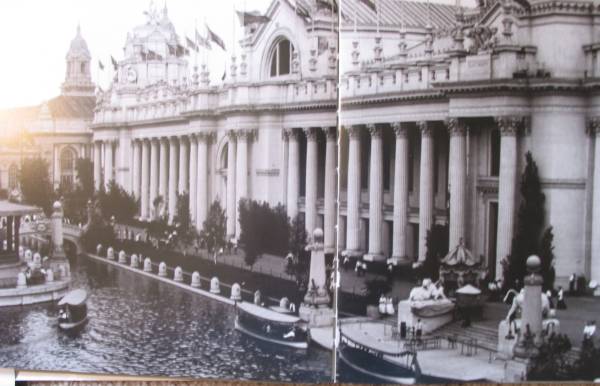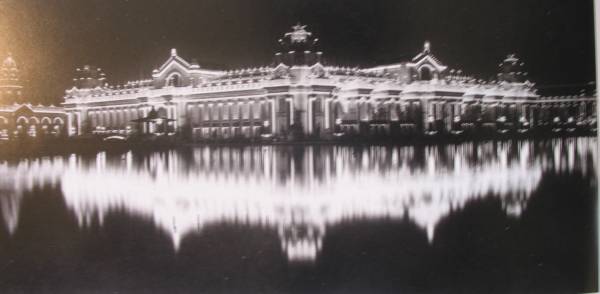Imagine
sitting at the top of Art Hill just fifty yards in front of the
Saint Louis Art Museum. You are sitting just below the crest of
Art Hill with the bulk of it stretching below you. At the bottom
is what looks like a pond. In 1904 this was the Grand Basin.
Below you and to the left of the Grand Basin was the Palace of
Machinery and Electricity. On the right side of the Grand Basin
was the Palace of Education and Social Economy.
Although inside the Art Museum it can
get pretty busy, if you walk or drive to the bottom of Art Hill and stand on
the other side of the Grand Basin and look uphill the view is always majestic
but it's often almost vacant and sometimes it is. One gets the sense of
abandonment and if you let your imagination really roll, perhaps of a nuclear
war that had sucked all life from the area yet left the great building at the
top intact.
Where you are standing was occupied by Festival Hall
nearly one-hundred years ago. To your left and to your
right were the East and West Cascades. Inside the
Palace of Machinery was the forty-five thousand kilowatt
generator that produced the electricity that ran the
fairgrounds. The three water pumps which brought the
Cascades to life boasted a daily capacity of
one hundred and sixty-five-million
gallons of water.
A mammoth
hydraulic press from Germany's Krupp Works was also housed in the
building's 406,000 square feet along with dozens of other metal and wood
working machines.







